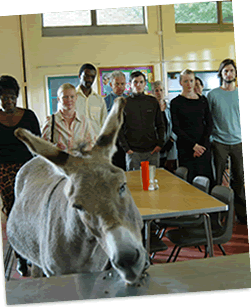 UWCSEA
UWCSEA is doing interesting curriculum work at the moment. In an attempt to clearly articulate our beliefs about learning and our understandings about how best to address the
school's mission statement we are rewriting our curriculum.
At a purely pragmatic level, this might seem foolish. The thousands of hours spent exploring other curricula and negotiating our own understandings could be avoided were we simply to choose a well-established program from outside the school.
ACARA's new Australian curriculum, for example, is based on years of academic discussion overlayed with extensive professional consultation and a rigorous validation and review process. What ACARA (or
Common Core in the USA or the UK
National Curriculum or any of a large number of other national or international curricula) provide to schools is a carefully considered package for teaching and learning. These curricula are valid and reliable and provide a level of credibility in the eyes of the community that allows teachers to get on with the practice of teaching knowing that they have easy answers to questions like "why do you teach that?" Answer: "because it is in the curriculum."
What I am discovering through being part of the UWCSEA Curriculum Articulation process, is that "because it's in the curriculum" is not a good enough answer. If you teach something because someone else told you to, then you are missing out on one of the most interesting, rewarding and, I would like to argue, vital pieces of the learning jigsaw.
The curriculum we are articulating at UWCSEA will not be as well-considered as the Australian Curriculum or Common Core or the UK National Curriculum. It can't be. As I sit with my colleagues exploring and discussing what learning looks like in the English curriculum (the area where I have been most focussed), I am very aware that our discussions are compromises and approximations. We borrow and build on other curricula and adapt them to our own context but we are constantly reaching points where we say "I'm not sure, this looks like the best answer at the moment and we will need to see how it works with students and make adaptations as we review the curriculum in its implementation." There are only 6 or 8 of us sitting around the table when we nut out the English curriculum and we lack the massive resources available to governments as they do similar work. But we have something very special available to us that governments do not: we are both designing and implementing what we have designed. Our answers to the question "why do you teach that?" will never be "because it's in the curriculum."
In the end what I think matters most is not so much the curriculum we are building as it is the relationship we will have to it. Building a curriculum requires a demanding re-assessment of the purpose and structure of each of its constituent disciplines. Before even this happens, it requires a demanding assessment of the very purpose and structure of teaching and this in turn requires a thoughtful reassessment of the purpose and structure of the school. In each of these processes, the relationship between the curriculum and the school community has changed. Each re-engagement with purpose and structure has breathed a little more life into our curriculum and moved it a little further from being a linear document that instructs, towards becoming a dialectic that engages.
Building Agency
We know that it is difficult to disentangle the relationship between structure and agency. The way the structures of society and the agency of individuals build on each other is an ongoing arena of
debate in Sociology. And whilst there is significant disagreement about what the relationship between these elements might be, a common theme amongst theorists from Max Weber to Anthony Giddens is that the structures of society serve to limit the agency of some individuals more than others. Crucially, education plays a particular role in this process; the sociologist
Basil Bernstein argued that the rules and "codes" of education which are implicit in curriculum and pedagogy often serve to close rather than open doors into an individual's future.
When children fail at school, drop out, repeat, they are likely to be positioned in a factual world tied to simple operations, where knowledge is impermeable. The successful have access to the general principle, and some of these – a small number who are going to produce the discourse – will become aware that the mystery of discourse is not order, but disorder, incoherence, the possibility of the unthinkable. But the long socialization into the pedagogic code can remove the danger of the unthinkable, and of alternative realities. (Bernstein, 1996, p.26)
In the context of UWCSEA's curriculum articulation, what speaks powerfully to me in this formulation is the dichotomy Bernstein describes between an understanding of knowledge as either impermeable or permeable - as a vessel in which the agency of the individual remains trapped or as a colander through which agency can filter and reform.
Too often education reform focuses only on the detail of curricula rather than recognising the important work of deliberately and strategically nurturing the agency of those who will be bringing curriculum to life in the classroom. Those of us who have been given the rare opportunity to reflect on the structure of our disciplines through the Curriculum Articulation process go into our classrooms armed with the most important of all understandings: we know what it's like to wrestle with the structures of knowledge and we can model this to our students. Critically, we know that the foundations of our knowledge are not fixed and nor are they easily categorised and labelled. Our knowledge is permeable and could be described differently. We have less certainty and more awe and this is what I think our students need if they are to take responsibility for achieving the UWCSEA
Educational Goal to "shape a better world."
My students and I are privileged to have behind us the courage of a community which is prepared to take the brave and dangerous step into a world of the 'unthinkable, and of alternative realities.'














